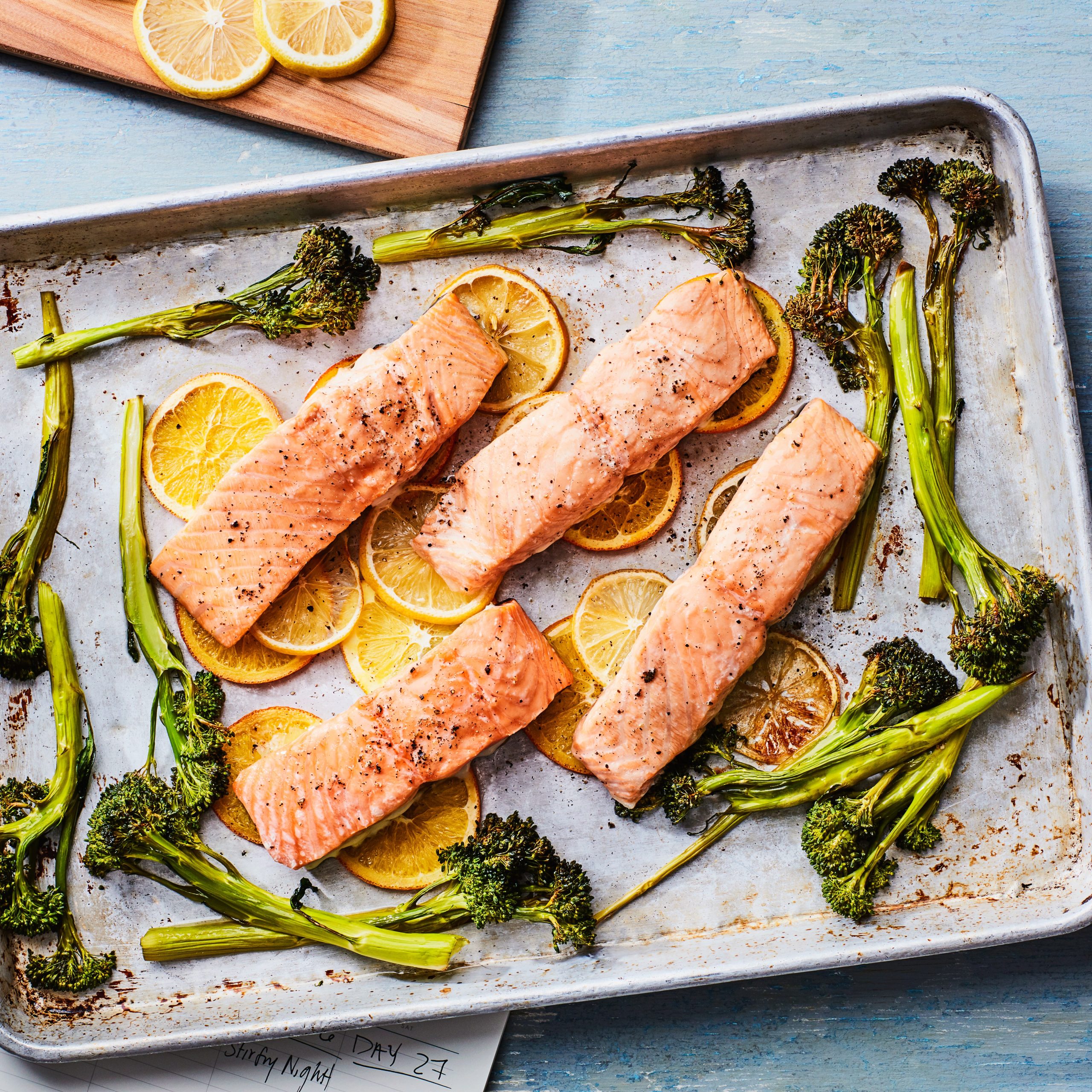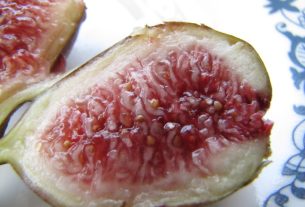When it comes to leftovers, we often find ourselves wondering if we can freeze certain foods.
One question that frequently arises is, can you freeze cooked salmon?
If you’ve ever pondered on the fate of that delicious salmon dish from last night’s dinner, join us as we explore the possibilities of freezing and reheating cooked salmon.
In this article, we’ll delve into the delectable world of reheated seafood and reveal some surprising alternatives to savoring this tasty fish.
can you freeze cooked salmon
Yes, you can freeze cooked salmon.
However, reheated cooked salmon may not taste as good as fresh.
The color and texture of the reheated fillets may be paler and more compact, with a dry texture.
While it may not be as enjoyable to eat on its own, reheated cooked salmon can still be repurposed and enjoyed in other dishes such as spreads, soups, curries, or fish cakes.
Additionally, eating leftover salmon cold is also an option.
Key Points:
- Cooked salmon can be frozen.
- Reheated cooked salmon may not taste as good as fresh.
- Reheated salmon may have a paler and more compact texture with a dry texture.
- Leftover cooked salmon can be repurposed in other dishes.
- Cold leftover salmon can also be eaten.
- Freezing cooked salmon is an option for storage.
can you freeze cooked salmon – Watch Video
💡
Pro Tips:
1. Salmon can be safely frozen after it has been cooked, but it’s recommended to consume it within 2 to 3 months for best quality. Freezing helps to preserve its flavor and texture, allowing you to enjoy cooked salmon at a later time.
2. When freezing cooked salmon, it’s essential to store it in an airtight container or wrap it tightly with plastic wrap to prevent freezer burn. This helps maintain the moisture and taste of the salmon during its time in the freezer.
3. Freezing cooked salmon not only saves you time and effort in preparing meals, but it also reduces food waste. If you have leftover cooked salmon that you won’t consume within a couple of days, freezing is an excellent way to extend its shelf life.
4. Thawing frozen cooked salmon properly is crucial to ensure food safety. The best method is to transfer the salmon from the freezer to the refrigerator and let it thaw slowly overnight. This gradual thawing process helps maintain the quality and flavor of the fish.
5. While freezing cooked salmon is a great option, it’s worth noting that the texture of the salmon may slightly change after thawing. It might become softer or slightly drier compared to when it was freshly cooked. However, this should still be enjoyable to eat and can be used in various dishes like salads, sandwiches, or pasta.
Blind Tasting Experiment: Freshly Cooked Vs Reheated Salmon
A blind tasting experiment was conducted to determine if it is possible to freeze and reheat cooked salmon. Three salmon fillets were involved in the experiment: one frozen overnight and reheated from frozen, one frozen overnight and thawed before reheating, and one cooked just before being served.
The purpose of the blind tasting experiment was to assess the quality and taste of the reheated salmon in comparison to the freshly cooked salmon. Each participant received a small portion of each salmon type and evaluated them based on their appearance, texture, flavor, and overall taste.
Appearance: Freshly Cooked Vs Reheated Fillets
One of the key differences observed in the blind tasting experiment was the appearance of the freshly cooked salmon compared to the reheated fillets. The freshly cooked salmon had a vibrant pink color and a moist, plump appearance. In contrast, the reheated fillets had a paler color and a more compact appearance. The fillet that was reheated from frozen had a grayish hue, which was visually less appealing compared to the other two fillets.
Texture: Freshly Cooked Vs Reheated Fillets
When it comes to texture, the freshly cooked salmon was described as tender and delicate. It had a melt-in-your-mouth quality that is often associated with well-cooked salmon. On the other hand, the reheated fillets had a slightly tacky texture and lacked the same moisture as the freshly cooked salmon. The fillet that was reheated from frozen had a particularly dry texture, which made it less enjoyable to eat.
- Freshly cooked salmon: tender and delicate
- Reheated fillets:
- Slightly tacky texture
- Lacks moisture
- Reheated from frozen: Dry texture.
“The fillet that was reheated from frozen had a particularly dry texture, which made it less enjoyable to eat.”
Flavor: Freshly Cooked Vs Reheated Fillets
When comparing freshly cooked salmon to reheated fillets, the flavor becomes a crucial aspect to consider. The freshly cooked salmon stands out with its delicate and mild flavor, perfectly balanced and retaining the natural sweetness of the fish. It doesn’t overpower or have any off-putting tastes. On the other hand, reheated fillets are slightly tacky and lack moisture. Although they still maintain a salmon flavor, it is not as pronounced or enjoyable as the freshly cooked salmon.
Taste Comparison: Freshly Cooked Vs Reheated Salmon
Based on the blind tasting experiment, it was evident that the reheated salmon did not taste as good as the freshly cooked salmon. The participants unanimously agreed that the freshly cooked salmon had superior taste, with its moist texture and delicate flavor. The reheated fillets, especially the one reheated from frozen, fell short in terms of both texture and flavor. However, this does not mean that reheated salmon is completely inedible.
Alternative Ways To Enjoy Reheated Salmon
While reheated salmon may not taste as good as freshly cooked salmon, there are alternative ways to enjoy it. One option is to purée the reheated salmon into a spread and use it as a topping for crackers or bread. Reheated salmon can also be added to soups or curries, where its flavor can blend well with other ingredients. Another suggestion is to form the reheated salmon into fish cakes, which can be pan-fried to add a crispy texture. These alternative ways allow you to repurpose reheated salmon and still enjoy its benefits.
Conclusion: Reheated Salmon Can Still Be Eaten And Repurposed
The blind tasting experiment revealed that reheated salmon may not match the taste of freshly cooked salmon. The reheated fillets were found to lack the vibrant appearance, delicate texture, and balanced flavor of the freshly cooked salmon. However, it is important to note that reheated salmon still holds some value. It can be repurposed and used in various dishes, as previously suggested.
Reheating Instructions And Flavor Tips
If you decide to reheat cooked salmon, there are a few important points to keep in mind:
- Avoid overcooking and drying out the salmon to maintain its taste and texture.
- One effective method is to gently reheat the salmon in the oven at a low temperature, around 275°F (135°C), for a shorter period of time.
- Adding a small amount of olive oil or butter to the salmon before reheating can help retain moisture and enhance the flavor.
- Seasoning the salmon with herbs, spices, or a squeeze of lemon juice can further enhance the overall taste.
Remember these tips when reheating cooked salmon to ensure a delicious and moist result.
Testing Different Reheating Methods
In addition to the blind tasting experiment, the author also tested different reheating methods to determine their effect on the taste and quality of the salmon. The first fillet was cooked the day before, frozen overnight, and reheated in the oven for 40 minutes. The second fillet was cooked the day before, frozen overnight, thawed for six hours, and then reheated in the oven for 10 minutes. The third fillet was cooked just before serving.
The results of the different reheating methods were consistent with the findings of the blind tasting experiment. The fillet reheated from frozen for 40 minutes had a dry texture and less desirable flavor compared to the other two fillets. The fillet that was thawed before reheating for 10 minutes had a slightly better texture and flavor, but still fell short of the freshly cooked salmon.
Other Options For Enjoying Leftover Salmon
Aside from reheating, there are other options for enjoying leftover salmon:
-
Eat the leftover salmon cold, either as is or in a salad. Cold salmon can be a refreshing addition to a green salad or can be served with a side of vegetables.
-
Use leftover salmon to make sandwiches, wraps, or sushi rolls. The versatility of salmon makes it a great ingredient for a variety of dishes, even when it’s not freshly cooked.
In conclusion, while reheated salmon may not reach the same level of taste and quality as freshly cooked salmon, it can still be eaten and repurposed in different ways. By being mindful of reheating methods and adding some flavor-enhancing ingredients, you can make the most out of leftover salmon and enjoy its benefits.
-
- Add some flavor-enhancing ingredients to the reheated salmon.
-
- Consider making salmon patties or cakes with the leftovers.
-
- Use the salmon as a topping for a pasta dish or a pizza.
“Leftover salmon is a versatile ingredient that can be enjoyed cold, in salads, sandwiches, wraps, or even sushi rolls.”
💡
You may need to know these questions about can you freeze cooked salmon
Can you freeze cooked salmon then reheat?
Yes, you can freeze cooked salmon and then safely reheat it later. However, there are important steps to follow to maintain its taste and texture. Start by fully thawing the salmon in the refrigerator. Once thawed, allow it to sit at room temperature for about 20 minutes while preheating the oven to 325°F. By following these guidelines, you can enjoy your reheated salmon without compromising its quality.
Can you freeze cooked salmon for meal prep?
Yes, you can freeze cooked salmon for meal prep! If you find yourself with leftover cooked salmon from your meal prep, freezing it is a great way to extend its shelf life. Simply place the cooked salmon in an airtight container or freezer bag, removing as much air as possible before sealing it. Frozen cooked salmon can be stored in the freezer for up to 2-3 months, allowing you to conveniently incorporate it into future meal prep sessions without worrying about it spoiling.
Is salmon good after freezing?
Yes, freezing salmon is an excellent method to preserve its freshness. Properly stored, salmon can maintain its quality for up to three months in the freezer. To ensure optimal results, it is important to package the salmon tightly, using both plastic and foil wrap to prevent any air exposure, which can lead to spoilage. By taking these steps, you can enjoy delicious, high-quality salmon even after it has been frozen.
Is it better to freeze salmon cooked or uncooked?
When it comes to freezing salmon, the optimal choice depends on your storage needs and preferences. Freezing cooked salmon gives you an extended storage time of six months, allowing you to enjoy its flavors and texture for a longer period. On the other hand, freezing uncooked salmon provides a shorter storage time of three months but retains its raw freshness, giving you the flexibility to prepare it according to different recipes or preferences. Ultimately, the decision of whether to freeze cooked or uncooked salmon comes down to personal taste and how long you plan to store it for.
Reference source
https://www.livestrong.com/article/555866-how-to-keep-cooked-salmon-in-the-freezer/
https://www.epicurious.com/expert-advice/can-you-freeze-cooked-salmon-article
https://www.flavcity.com/salmon-meal-prep/
https://www.freshseafood.com/blogs/fresh-blog/wild-about-salmon-how-to-store-fresh-salmon



